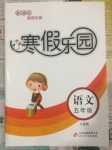题目内容
The lift ________ yesterday. We’ll have to walk up to the eighth floor this evening.
A. broke down B. took down C. came down D. got down
练习册系列答案
 寒假乐园北京教育出版社系列答案
寒假乐园北京教育出版社系列答案
相关题目
写作
假如你是李华,你的外国朋友Jack想了解著名科学家屠呦呦的相关情况, 请你根据以下的要求给他写一封回信。
姓名 | 屠呦呦 |
国籍 | 中国 |
职业 | 药学家,科学家 |
兴趣爱好 | 自幼对传统中药兴趣浓厚 |
主要经历 | 1. 1930年12月30日生于浙江宁波; 2. 1951年考入北京大学,主修制药专业; 3. 毕业后接受中医培训两年半,并一直在北京从事中医工作; 4. 1972年成功发现并制成青蒿素; 5. 2015年10月5日,她被授予诺贝尔医学奖,成为中国第一个获得诺贝尔奖的女性科学家。 |
注意: 1. 词数100左右;
2. 可以适当增加细节,以使行文连贯;
3. 参考词汇:
药学家chemist 青蒿素Qinghaosu 诺贝尔医学奖 Nobel Prize in Medicine
4.信的开头和结尾已经为你写好。
Dear Jack, I am glad to hear that you would like to know something about the famous scientist Tu Youyou. Now, I will give you a brief introduction to her. Wish you all the best ! Yours, Li Hua |

